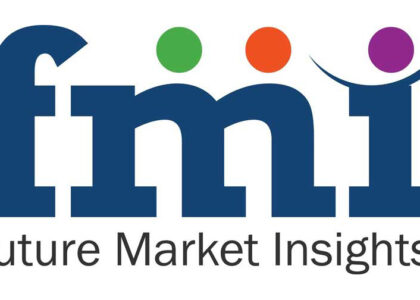The incontinence skincare products market is on a steady growth trajectory, estimated to be valued at USD 2.93 billion in 2023 and expected to reach USD 4.55 billion by 2033. This significant increase signifies a compound annual growth rate (CAGR) of 4.5% during the forecast period. As part of the broader skincare market, incontinence skincare products hold approximately 7% to 10% of the total market share, reflecting an increasing recognition of the importance of specialized skincare for individuals experiencing incontinence.
Understanding Incontinence Skincare Products
Incontinence skincare products encompass a range of items designed to address the unique needs of individuals with urinary or fecal incontinence. These products include:
- Barrier creams: Protect the skin from moisture and irritants.
- Cleansing wipes: Provide gentle cleansing while maintaining skin integrity.
- Moisturizers: Help keep the skin hydrated and prevent dryness.
- Odor control products: Minimize unpleasant smells associated with incontinence.
These products are essential not just for physical comfort but also for promoting dignity and confidence in those affected by incontinence.
Key Takeaways from the Incontinence Skincare Products Market:
- According to FMI, the United States leads the growth in North America, accounting for approximately 4.3% CAGR during the forecast period.
- In India, sales of incontinence skincare products are projected to surge at a 4.1% CAGR over the next decade.
- Germany is expected to experience robust growth at a CAGR of 4.2% by 2023.
- Future Market Insights predicts women to dominate the end-user segment with a CAGR of 4.7% over the next decade.
- As per FMI, the creams segment is set to expand at an impressive 4.9% CAGR from 2023 to 2033.
Key Factors Driving Market Growth
1. Rising Awareness and Education
There is a growing recognition of incontinence as a common issue, particularly among the elderly population. As awareness increases, so does the demand for products that can help manage this condition. Educational initiatives by healthcare providers and organizations are helping to reduce the stigma surrounding incontinence, encouraging more individuals to seek solutions.
2. Aging Population
The global demographic shift towards an aging population is a significant driver of the incontinence skincare market. As people age, they are more likely to experience incontinence issues, leading to an increased need for effective skincare products tailored to their needs.
3. Product Innovation
Manufacturers are continually innovating to develop more effective and user-friendly products. Advances in formulations, such as the inclusion of natural ingredients and hypoallergenic options, are making incontinence skincare products safer and more appealing to consumers.
4. Increased Focus on Personal Care and Comfort
With a heightened focus on personal hygiene and comfort, especially in the wake of recent health challenges, consumers are more willing to invest in products that promote well-being. Incontinence skincare products are increasingly viewed as essential components of personal care routines.
Market Challenges for Incontinence Skincare Products
- Stigma and Awareness Issues
Despite increased awareness, incontinence remains a sensitive subject for many individuals. The stigma associated with incontinence can deter potential users from seeking out products or discussing their needs with healthcare providers. This reluctance can lead to underutilization of available skincare solutions, hindering market growth.
- Competition from Alternative Products
The market for adult diapers and absorbent products is robust, often overshadowing the niche of incontinence skincare. Consumers may opt for these alternatives due to perceived effectiveness, convenience, or cost-effectiveness, potentially limiting the growth of specialized skincare solutions.
- Price Sensitivity
Many consumers in the target demographic, particularly the elderly, may be on fixed incomes or budgets. The cost of specialized skincare products can be a barrier to purchase, especially if cheaper alternatives are available. Manufacturers need to balance quality and affordability to attract and retain customers.
- Limited Distribution Channels
Incontinence skincare products are not always widely available in retail settings, particularly in rural areas. Limited access to these products can impede sales growth. Strengthening distribution channels, including online platforms, is essential to improve availability and reach a broader audience.
- Regulatory Challenges
The skincare industry is subject to various regulations regarding product safety and efficacy. Navigating these regulations can be complex and time-consuming for manufacturers, especially when introducing new formulations or innovations. Ensuring compliance while maintaining product quality is crucial for market players.
Market Segmentation
By Product Type:
- Creams
- Lotions
- Washes/Cleansers
- Wipes
- Gels/Oils
By Price:
- Low
- Medium
- High
By End-User:
- Men
- Women
- Kids
By Sales Channel:
- Hypermarkets/ Supermarkets
- Pharmacy/Drug stores
- Convenience stores
- Wholesalers and Distributors
- Online Retail Sales
By Region:
- North America
- Latin America
- Western Europe
- Eastern Europe
- South Asia and Pacific
- East Asia
- Middle East & Africa
About Future Market Insights (FMI)
Future Market Insights, Inc. (ESOMAR certified, recipient of the Stevie Award, and a member of the Greater New York Chamber of Commerce) offers profound insights into the driving factors that are boosting demand in the market. FMI stands as the leading global provider of market intelligence, advisory services, consulting, and events for the Packaging, Food and Beverage, Consumer Technology, Healthcare, Industrial, and Chemicals markets. With a vast team of over 400 analysts worldwide, FMI provides global, regional, and local expertise on diverse domains and industry trends across more than 110 countries.
Contact FMI:
Future Market Insights Inc.
Christiana Corporate, 200 Continental Drive,
Suite 401, Newark, Delaware – 19713, USA
T: +1-845-579-5705
For Sales Enquiries: sales@futuremarketinsights.com
Website: https://www.futuremarketinsights.com
LinkedIn| Twitter| Blogs | YouTube


